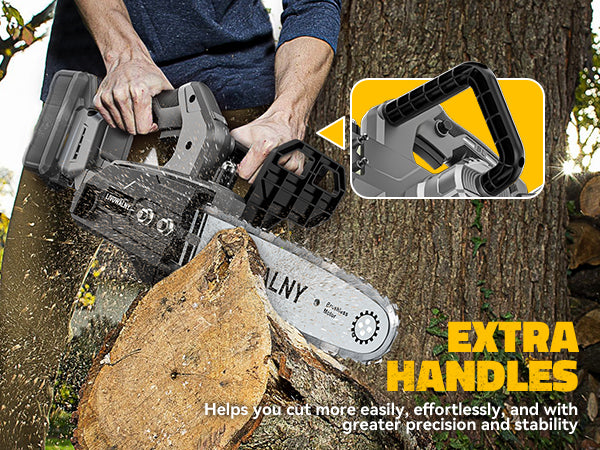
HOW TO ADJUST CORDLESS CHAINSAW CHAIN TENSION: ENSURING SAFETY AND PERFORMANCE
One key question that every chainsaw owner often considers is, “ How tight should a chainsaw chain be? ” Operating a Livowalny chainsaw with incorrect tension can lead to numerous issues, compromising both the tool's performance and the user's safety. This guide will help you understand the right tension that is suitable to ensure the efficiency of your chainsaw as well as your safety.
Why Proper Chain Tension Matters
Maintaining proper chain tension is crucial for your cordless chainsaw, as it enhances safety by preventing the chain from slipping off the guide bar, ensures efficiency by enabling smooth and even cuts with less effort, and promotes longevity by reducing wear on the chain, guide bar, and motor, ultimately extending the tool's lifespan.
How Tight Should a Chainsaw Chain Be
The chain on Livowalny cordless chainsaw should be snug but not too tight. If it's too loose, it will sag or can be pulled away from the guide bar. If it's too tight, it will be hard to move by hand and create excessive friction. The ideal tension allows the chain to be pulled slightly away from the guide bar but snaps back into place when released, and it should move freely when rotated by hand.
How to Adjust Livowalny Chainsaw Chain Tension
-
Prepare for Adjustment
Remove the battery for safetyand locate the nuts on the side of the guide bar. Loosen them slightly to allow for adjustment. -
Adjust the Tension Screw
Find the tension adjustment screw, usually located near the guide bar.Turn it clockwise to tighten the chain or counterclockwise to loosen it. - Test the Tension
Pull the chain away from the guide bar at the middle point. There should be a small gap, but the drive links (the inner teeth) should remain engaged with the bar. Rotate the chain by hand to ensure it moves smoothly.
- Tighten the Bar Nuts
Once the chain is properly tensioned, tighten the bar nuts securely to lock the adjustment in place.
How to Determine If Livowalny Cordless Chainsaw Has the Right Tension
The “Snap-Back” Test: Gently pull the chain away from the guide bar and release it. If it snaps back into position snugly, the tension is correct.
Free Movement Test: Rotate the chain by hand along the guide bar. It should move freely without sticking or feeling overly tight.
No Sagging: Look along the bottom of the guide bar. The chain should remain flush with the bar and show no visible sag.
Cutting Performance: A correctly tensioned chain will cut smoothly and efficiently without excessive resistance or vibration.
Getting the chain tension right on your cordless chainsaw is a simple yet vital step for safe and effective operation. A properly tensioned chain should be snug but not overly tight, with just enough slack to move freely along the guide bar. Regular checks and adjustments will keep your chainsaw running smoothly and extend its lifespan. With the right tension, you’ll enjoy safer, smoother cutting and better overall performance.






